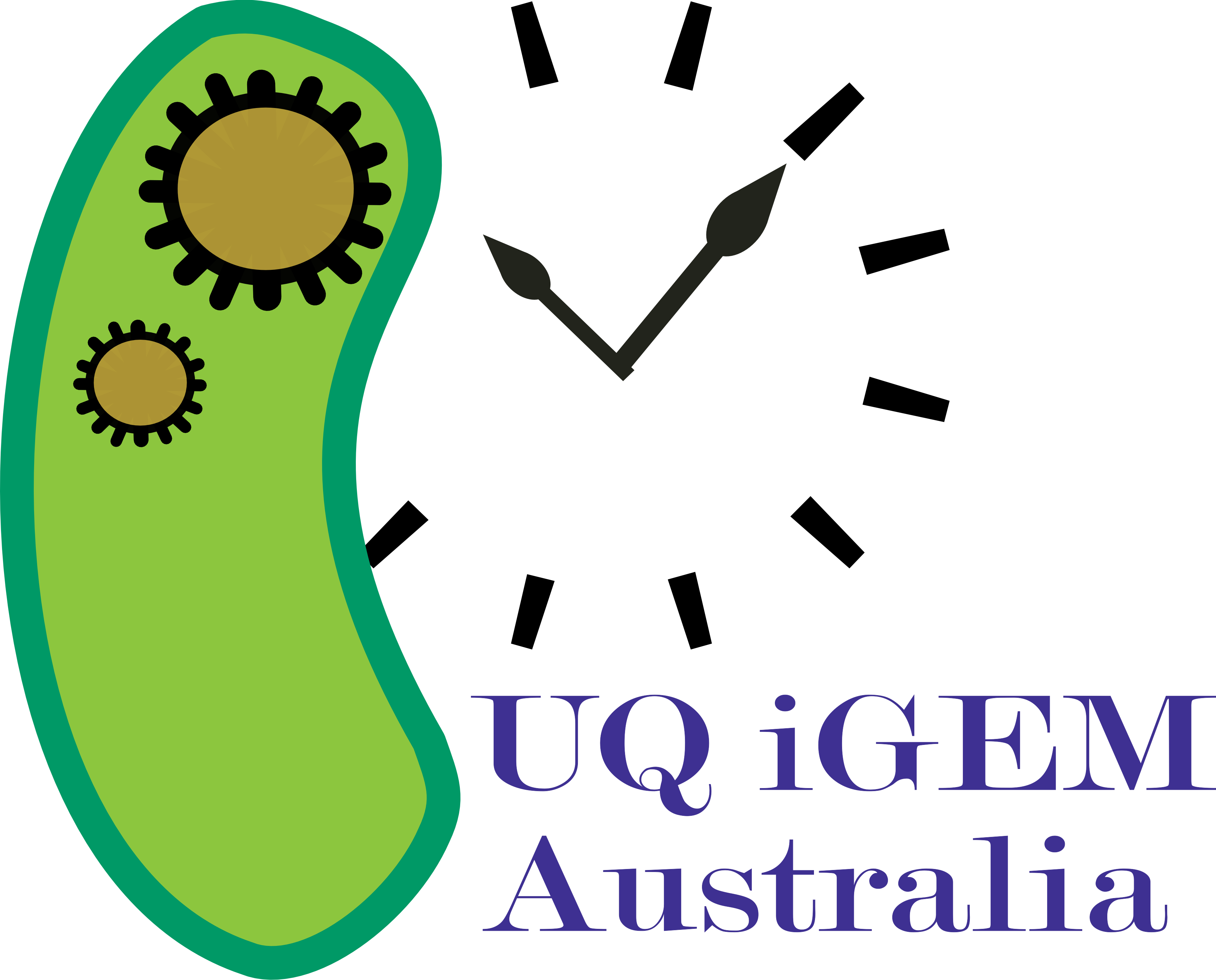Team:UQ-Australia/Notebook/April
From 2011.igem.org
| (One intermediate revision not shown) | |||
| Line 1: | Line 1: | ||
{{:Team:UQ-Australia/Template:Header}} | {{:Team:UQ-Australia/Template:Header}} | ||
| - | |||
| - | |||
{|style="width:100%;" border="0" cellpadding="10" cellspacing="0" | {|style="width:100%;" border="0" cellpadding="10" cellspacing="0" | ||
| + | |- valign="top" | ||
|rowspan="2"|During this period, we had a number of discussions on different possible topics. Suggestions included engineering microglia to target and kill brain cancers, targeting HIV surface proteins to bring about their destruction, or modifying microglia to target and engulf prions. Other ideas involved utilizing light receptors for specific purposes, or targeting biofilm formation. However, in the end we decided to focus on the circadian rhythm, with an aim to replicate this system in a mammalian system that could be used in iGEM. After some time developing a plan for this system, we discovered that the parts we required were covered by patents and so we would be unable to send anything we made in to the registry. As a result, we decided to switch to a bacterial system, and source some plasmids from Dr. Alex Ninfa (Michigan University) and Dr. Susan Rowland (University of Queensland). | |rowspan="2"|During this period, we had a number of discussions on different possible topics. Suggestions included engineering microglia to target and kill brain cancers, targeting HIV surface proteins to bring about their destruction, or modifying microglia to target and engulf prions. Other ideas involved utilizing light receptors for specific purposes, or targeting biofilm formation. However, in the end we decided to focus on the circadian rhythm, with an aim to replicate this system in a mammalian system that could be used in iGEM. After some time developing a plan for this system, we discovered that the parts we required were covered by patents and so we would be unable to send anything we made in to the registry. As a result, we decided to switch to a bacterial system, and source some plasmids from Dr. Alex Ninfa (Michigan University) and Dr. Susan Rowland (University of Queensland). | ||
| - | ! | + | ! [[File:UQ-Australia_logo_2011.png|125x125px|link=https://2011.igem.org/Team:UQ-Australia]] |
| - | + | ||
| - | + | ||
|} | |} | ||
| - | |||
| Line 26: | Line 22: | ||
Glycerol stocks of plasmids from Dr Ninfa were prepared. | Glycerol stocks of plasmids from Dr Ninfa were prepared. | ||
| - | Minipreps of the plasmids containing GlnAp2 and glnG were prepared before we did a PCR on glnG to add BioBrick | + | Minipreps of the plasmids containing GlnAp2 and glnG were prepared before we did a PCR on glnG to add BioBrick sites |
Gel and purification of araC, lacI, pBAD and glnG. Nanodrop results: | Gel and purification of araC, lacI, pBAD and glnG. Nanodrop results: | ||
Latest revision as of 00:42, 6 October 2011
 "
"





